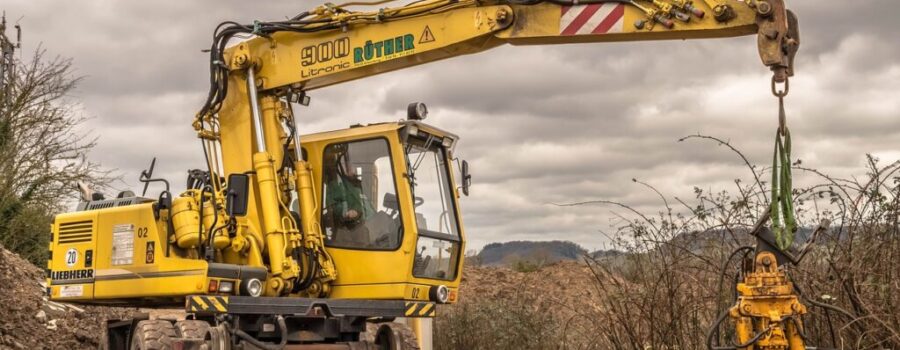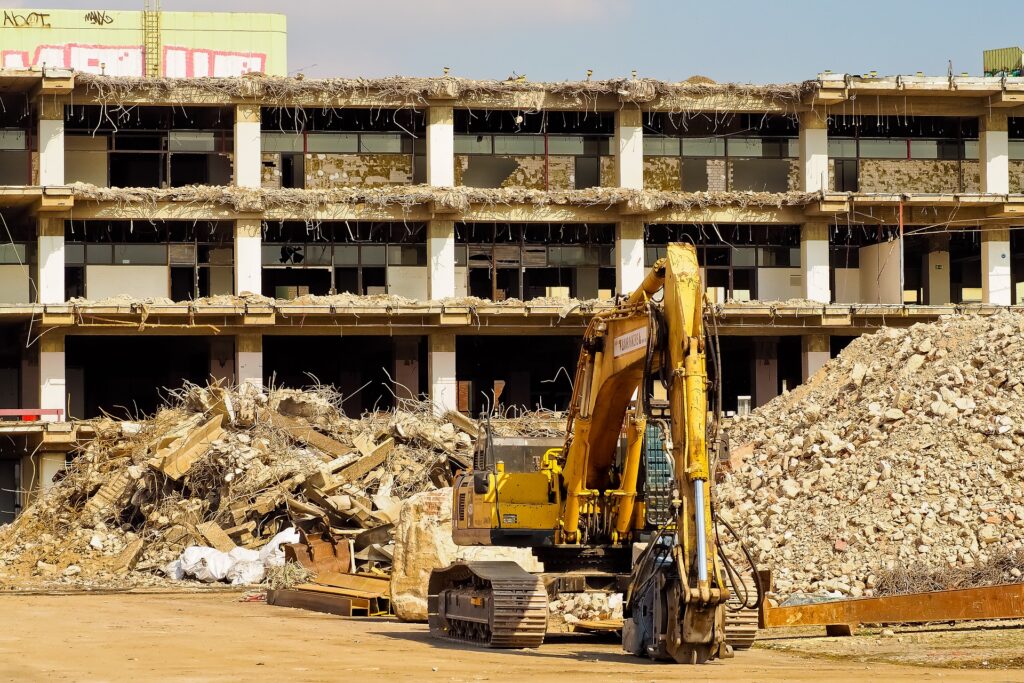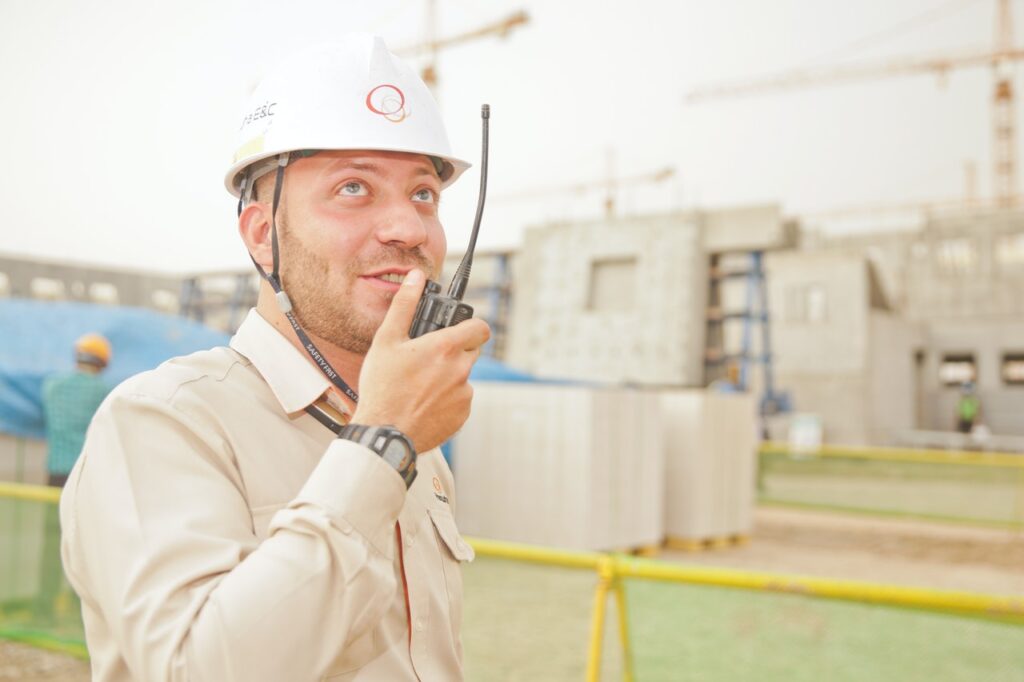
Defining the Construction Redevelopment Process
When you’re getting ready to start work on a new project, it’s important to determine what this project would be classified as. When new construction is being added to land that has been previously occupied or existing structures are set to undergo substantial renovations, this is considered to be a redevelopment project. The redevelopment process will usually start with demolishing one or more buildings that are deemed to be too expensive or obsolete.
The most common example of a redevelopment project is when an existing building is demolished so that a new one can be built. However, redevelopment can also occur when a current complex or building is repurposed in order for the property to better align with market trends. Redevelopment projects can range in size from small to large and are oftentimes necessary to revitalize a specific site or community.
Since redevelopment projects are able to bolster the site where the project occurs, redevelopment is considered to be great for the surrounding community. When communities start to perform poorly in the real estate market, a sizable redevelopment project can alter the entire outlook of a community and increase market value for properties that are situated in the community in question.
Keep in mind that redevelopment projects differ from standard land development projects. Land development projects usually occur when a land has been vacant for a significant period of time. On the other hand, redevelopment projects take place on land that was already in use but may currently be in poor condition. If a building is demolished to make way for a new one, this would be considered a redevelopment project. The same is true if major renovations are being performed on an existing building. Before starting work on a redevelopment project, it’s important that this process is defined and properly understood. This article takes an in-depth look at the entirety of the redevelopment process and what it means for the timeline of your project.
Key Takeaways:
- Redevelopment occurs when new construction is added to previously occupied land or the land structures need to undergo renovations.
- The three steps involved in the redevelopment process include an environmental site assessment, a response action plan, and monitoring the construction project at hand.
- The redevelopment process is considered lengthy due to the reviews and studies that determine if the site can be developed on.
Types of Redevelopment

There are many different types of redevelopment that can occur within a community, each of which can be beneficial to the quality and strength of the surrounding real estate market. The primary types of redevelopment include:
- Current buildings are officially demolished so that new ones can be constructed – When a building is no longer in use or doesn’t add to the strength of the community’s real estate market, demolishing the existing building and constructing a new one can allow the community to adapt to a changing market.
- Existing buildings are refurbished – A current building can be renovated or improved upon in a manner that bolsters the property value and aligns the building with market trends.
- Infill housing adds density – Infill housing refers to the act of adding properties to a site that currently contains a certain number of buildings, which improves the value of the community.
- Industrial yard with contaminated soils is redeveloped – There are times when vacant land is available in areas where industrial yards once existed, which means that the soil may be contaminated. Redevelopment projects are able to clean up the area before performing new construction that will automatically increase the market value of the site.
3 Steps in the Redevelopment Process

There are three separate and distinct steps that are involved in the redevelopment process, which include performing an environmental site assessment, creating a response action plan, and checking in on your construction project. It’s important to understand that the need for redevelopment projects has increased over time because of the reduction in available land. The total amount of land that’s available for new construction projects is lower than ever before in urban and suburban areas throughout the country, which means that land that has already been developed on will likely need to be redeveloped.
In the modern world, it’s also very important to take the environment into account with any new redevelopment project. People want to be certain that redevelopment projects are safe for the overall environment and will protect natural resources. It’s also possible that environmental liabilities could occur in the future, which means that being environmentally conscious before beginning a redevelopment project could save you from future litigation. The first aspect of the redevelopment process involves obtaining an environmental site assessment.
1. Environmental Site Assessment
Environmental site assessments can be broken down into Phase 1 ESAs and Phase 2 ESAs. A standard Phase 1 ESA is considered to be a historical environmental review. This review allows you to identify the current environmental conditions of the site. It’s necessary to perform this review because contamination of the site isn’t always obvious. This type of ESA will include:
- A visual inspection of the property
- A comprehensive review of environmental liens, government records, and historical documents
- Interviews with operators, occupants, and owners of the site
- A report that details the findings
A top reason to perform an ESA is because the process is considerably less expensive than a site cleanup. If the environmental issues are only identified after development begins, the site cleanup can be costly. Keep in mind that the ESA results can dictate how the sale of the property is negotiated in the future.
In the event that the Phase 1 ESA identifies some environmental problems on the site, you can conduct a Phase 2 ESA, which is considered to be more extensive. During this process, many different samples of the land will be collected and studied. These samples include sediment, ground water, soil vapor, and soil.
Once the samples have been collected, they will be studied in a lab to effectively determine if the land on the property has been contaminated. This specific ESA will be able to ascertain the exact extent, area, and magnitude of the contamination. When a final report is created from the Phase 2 ESA, the environmental guidelines for construction can be made. In some situations, a Response Action Plan will need to be created.
2. Create a Response Action Plan (RAP)

When contamination is found during a Phase 2 ESA, a Response Action Plan may need to be formulated. A RAP is a detailed list of the various activities that are required to effectively manage the contamination of the site during the project in question. Site cleanup goals will also be addressed in an RAP. The activities that are detailed in a Response Action Plan will adhere to the goals of the development project.
There are two different RAP types, which include risk-based response actions, and construction-related response actions. For construction-related response actions, the proper handling of all contaminated materials during redevelopment will be identified. Without an RAP in place, the contaminated materials could be handled improperly while redevelopment is ongoing, which could adversely affect the status of the project.
As for risk-based response actions, these actions focus on mitigating exposure to contamination and getting rid of the source of contamination. Design elements could be included within the RAP to reduce ground water migration and soil vapor migration. In order for an RAP to be handled properly and without issue, it’s important that this process is overseen by reputable environmental scientists. When the RAP has been completed, you should have a firm understanding of what it will take to complete the redevelopment process even when the area is contaminated in some manner.
3. Checking in on Your Construction Project
The final aspect of this process involves checking in on your construction project and making sure that the mitigation of contamination is going according to plan. Comprehensive construction monitoring includes analysis and field screening. The techniques that are performed during monitoring will center around the separation of all contaminated materials from materials that have yet to be contaminated. In many cases, special equipment will be necessary when you address the contamination of the site. This equipment should be able to detect contamination visually or by identifying odors.
It’s also necessary at this point to document all of the methods that are used to handle and treat the contaminated materials. The documents that you create can be addressed later on to ensure that the area was decontaminated. You will then be required to submit a report to the right regulatory agency, after which you should receive documentation that states that additional action isn’t needed. The construction site will then be ready to be used for its intended purpose.
The redevelopment process is a lengthy one that requires performing several different reviews and studies to determine if the site can be developed on. Whether an industrial plant was situated on the land or an old building is being demolished, there’s always a possibility that the land has become contaminated, the source of which must be identified and eliminated before development can continue. When a redevelopment project is successfully completed, the value of the land should increase significantly alongside the market value of the surrounding community.

Jason Somers, President & Founder of Crest Real Estate
With over 15 years of professional experience in the Los Angeles luxury real estate market, Jason Somers has the background, judgement and track record to provide an unparalleled level of real estate services. His widespread knowledge helps clients identify and acquire income producing properties and value-ad development opportunities.
Learn more about Jason Somers or contact us.



